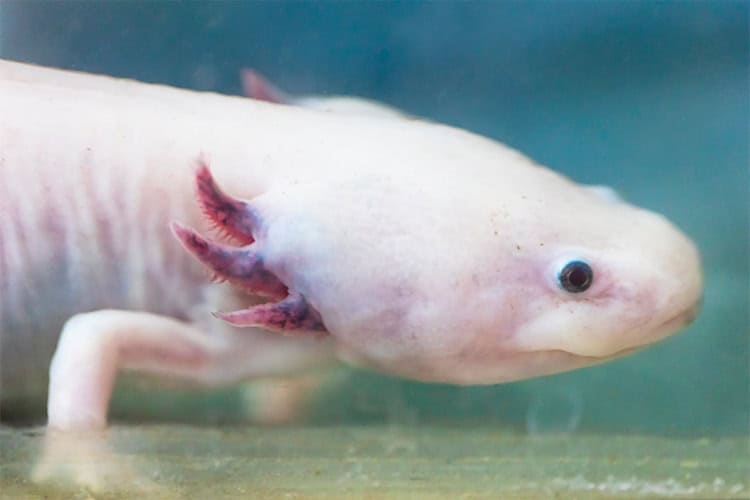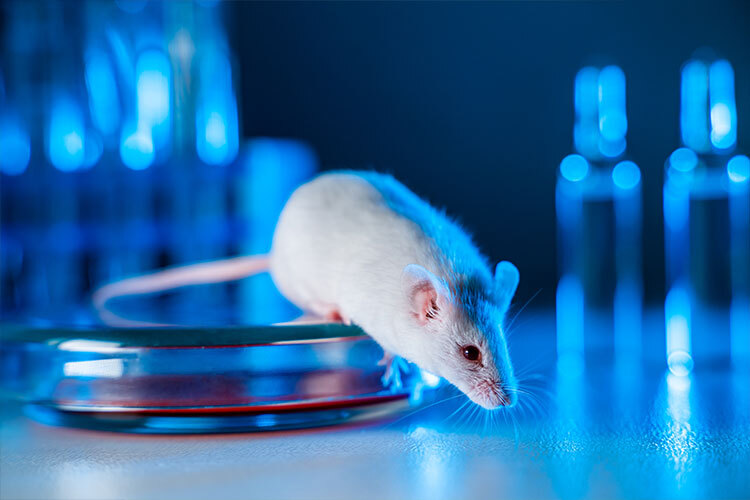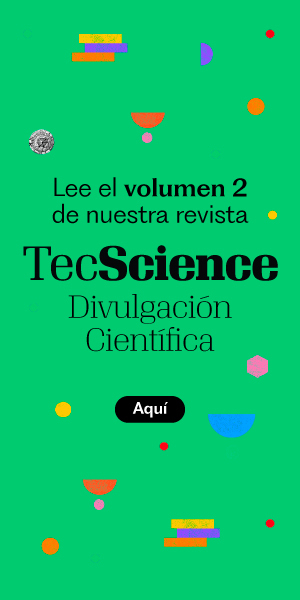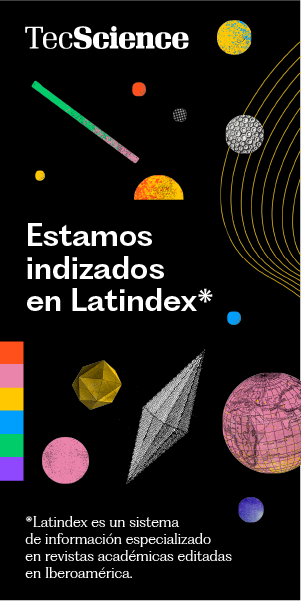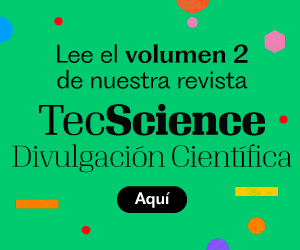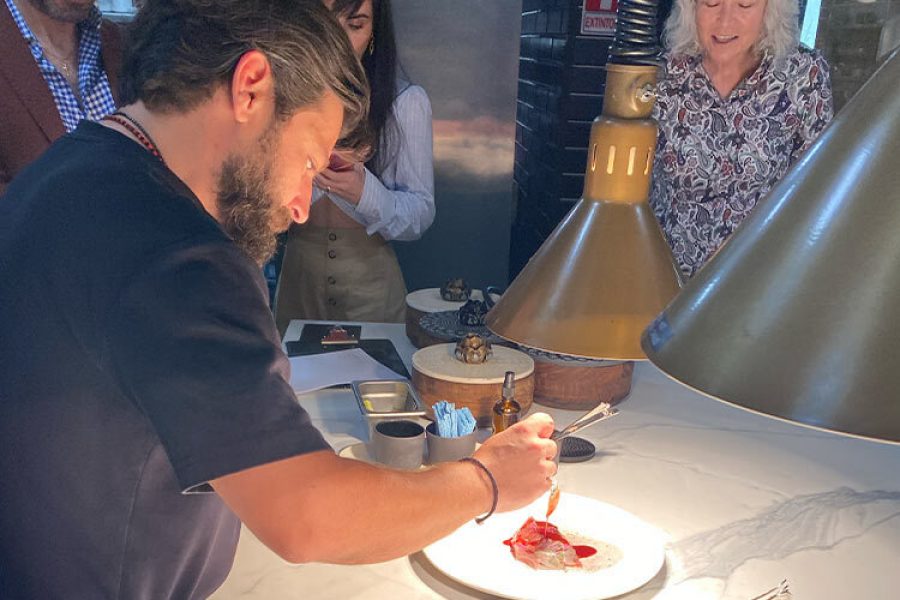Axolotls are among the most iconic creatures in popular culture today, but that doesn’t mean their survival is secure. In fact, their only natural habitat—the lake system of Xochimilco—is rapidly deteriorating. Saving them from extinction will only be possible by restoring the lake itself.
Ambystoma mexicanum —the axolotl’s scientific name— is native to these freshwater ecosystems, which have been severely impacted by pollution, urban expansion, and the introduction of invasive species such as carp, tilapia, and water hyacinths.
“In 1998, there were about 6,000 axolotls per square kilometer, but in the census we’re conducting now, we can barely find any,” says Vania Mendoza, a master of science at the Ecological Restoration Laboratory of the Institute of Biology (IB, in Spanish) at the National Autonomous University of Mexico (UNAM, in Spanish).
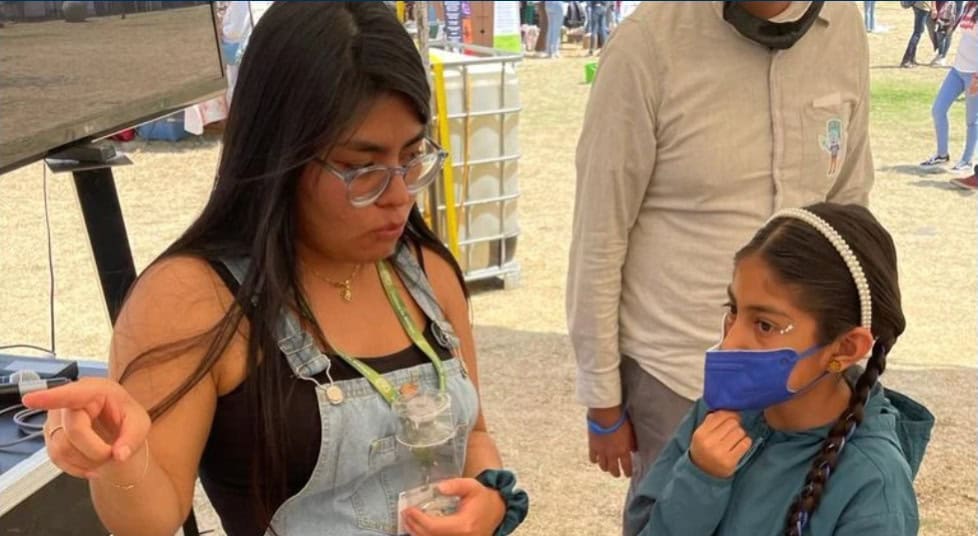
In 2014, the last census conducted by UNAM found only 36 axolotls per square kilometer. The current count is still underway, but the numbers are likely even lower today.
“It’s shocking how many tilapia and carp we find instead of axolotls,” Mendoza says. “Over the past few years, the situation has gotten significantly worse.”
One of the biggest challenges in conserving this species is the shifting land use of the chinampas—historical agricultural plots in the lake. Instead of being used for traditional farming, many are being converted into soccer fields or event venues, which are far more profitable for landowners.
To address this issue, researchers launched Chinampa Refugio, a project that merges scientific research with traditional chinampa farming to restore the Xochimilco ecosystem.
“People must understand that the axolotl cannot survive without Xochimilco, and Xochimilco cannot thrive without the axolotl,” Mendoza explains.
How to Save the Axolotl
Chinampa Refugio was conceived by Luis Zambrano, a researcher at the Ecological Restoration Laboratory at IB, in collaboration with undergraduate and graduate students, as well as architects Alejandra Ramos and Néstor Rangel.
“The primary goal is to restore the ecosystem so that axolotls can be reintroduced in the future,” says Mendoza, who coordinates the project.
As its name suggests, the system consists of a chinampa (a floating agricultural plot) and a refuge for axolotls.
The refuge is a canal separated from the main waterways of Xochimilco by biofilters, which block invasive species from entering while filtering contaminants from the water.
“Carp and tilapia can’t get through the biofilters,” Mendoza explains.
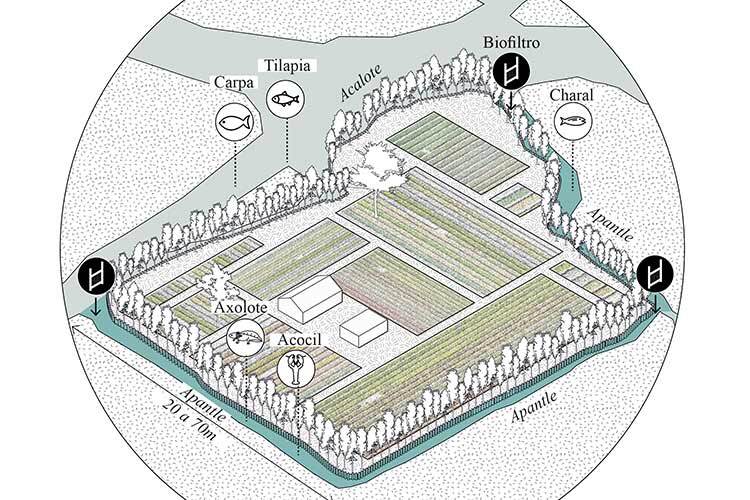
These biofilters are made from tezontle, a porous volcanic rock that allows water to flow while trapping debris. Additionally, native aquatic plants line the refuge, and their roots help filter the water further.
“The water inside the refuges is of much higher quality in terms of temperature, pH, and dissolved oxygen,” says Mendoza.
In the chinampas, researchers and farmers cultivate native plants, fruits, and vegetables, which they can sell for income.
Inside the refuges, axolotls swim freely alongside native species such as acociles (small crustaceans) and charales (tiny fish), key parts of their diet.
So far, researchers have built 31 Chinampa Refugio units in partnership with local farmers, but their goal is to create more than 300.
“We already know this is an effective way to restore the ecosystem and protect the axolotl, but now we need to scale it up,” Mendoza says.
The Shark of Xochimilco
According to Mendoza, one of the key reasons for developing Chinampa Refugio is that axolotls are the top predators in their ecosystem, playing a critical role in maintaining ecological balance. The arrival of invasive species has pushed them out of their natural niche.
“They might look passive, but axolotls are essentially the sharks of their habitat,” she says. “They keep all the populations below them in check.”
However, tilapia and carp are top predators, competing with axolotls for resources and even preying on their eggs.
Axolotls have particular breeding seasons that depend on water quality. As amphibians, they are extremely sensitive and require optimal conditions to survive.
In contrast, tilapia and carp thrive even in degraded environments, making it impossible for axolotls to coexist with them.
“There have been programs encouraging people to fish these invasive species, but the reality is that they reproduce at an incredibly fast rate,” Mendoza explains. Chinampa Refugio helps control their populations by limiting their access to space and resources.
For conservation efforts to truly succeed, local farmers must be incentivized to participate in Chinampa Refugio instead of converting their land into recreational spaces.
Mendoza says this is one of the biggest challenges. While many farmers would prefer to continue the tradition of polyculture farming in chinampas, it is no longer financially sustainable.
“The farmers we work with know this isn’t the most profitable option, but they do it out of love for Xochimilco,” Mendoza says.
A Shared Responsibility
Saving the axolotl from extinction matters for many reasons. First and foremost, it is a one-of-a-kind species, a natural treasure of Mexico.
Ambystoma mexicanum, commonly known as the Mexican axolotl, belongs to a family of 33 salamanders native to the Americas. Of these, 17 species live in Mexico, but only two or three exhibit a rare condition called neoteny.
“It’s as if they remain trapped in a juvenile stage—they never leave the water, never complete their life cycle, and never become land-dwelling salamanders,” Mendoza explains.
This gives axolotls their distinctive look and incredible abilities, such as regenerating complex organs like the brain and heart, a trait with huge implications for medical research.
Beyond that, they play a crucial role in the Xochimilco ecosystem, one of the last places where chinampa farming still survives. This ancient agricultural method is not only productive but also sustainable.
“The farmers we work with don’t use pesticides or agrochemicals of any kind—their practices are entirely traditional,” Mendoza says. “Buying a lettuce from the supermarket isn’t the same as buying one from here.”
To support conservation efforts, researchers have launched the AdoptAxolotl campaign, where anyone can donate a monthly amount starting at 200 pesos to help fund Chinampa Refugio.
“We want to invite society to take part in our efforts to save the axolotl,” Mendoza says. “This isn’t just about academia—we need governments, farmers, and everyday people to join us.”
Were you interested in this story? Do you want to publish it? Contact our content editor to learn more about marianaleonm@tec.mx
